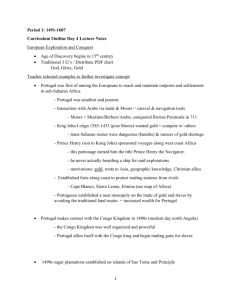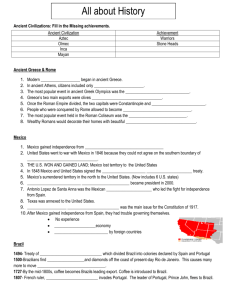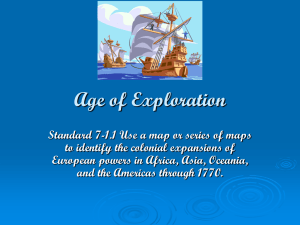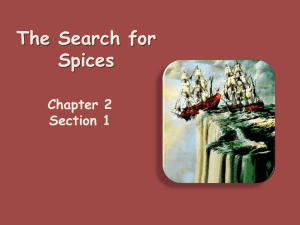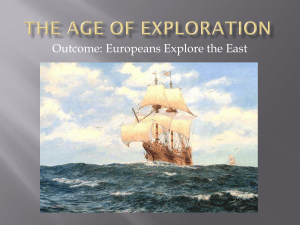HOLA, Chapter 6, “Colonial Brazil,” 122
advertisement
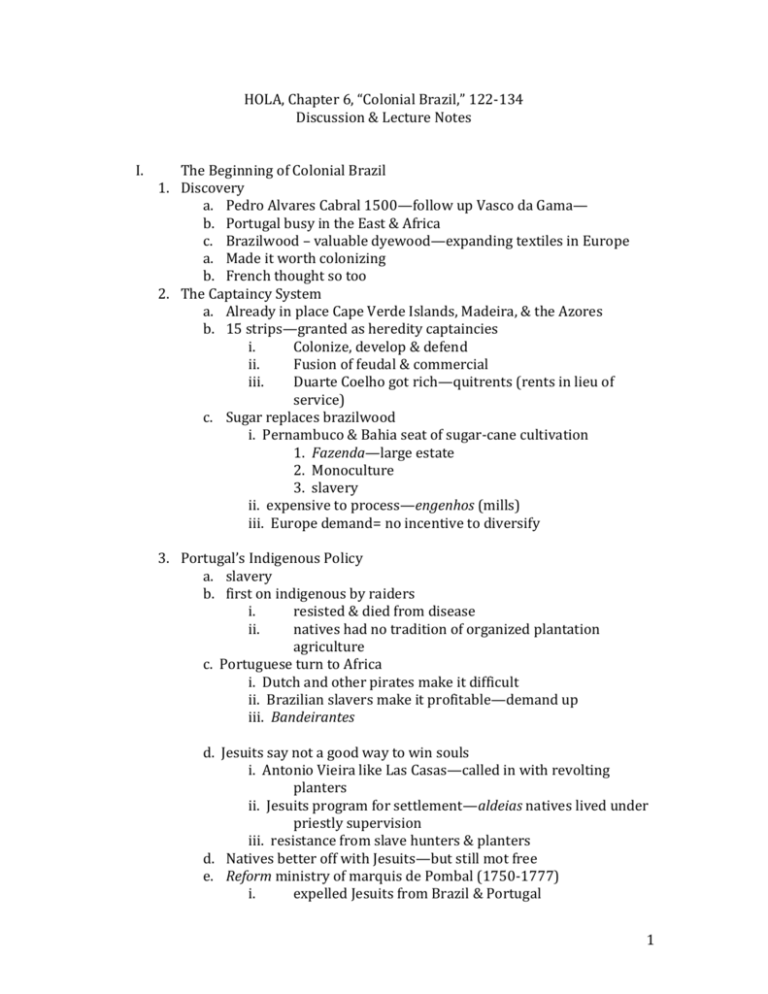
HOLA, Chapter 6, “Colonial Brazil,” 122-134 Discussion & Lecture Notes I. The Beginning of Colonial Brazil 1. Discovery a. Pedro Alvares Cabral 1500—follow up Vasco da Gama— b. Portugal busy in the East & Africa c. Brazilwood – valuable dyewood—expanding textiles in Europe a. Made it worth colonizing b. French thought so too 2. The Captaincy System a. Already in place Cape Verde Islands, Madeira, & the Azores b. 15 strips—granted as heredity captaincies i. Colonize, develop & defend ii. Fusion of feudal & commercial iii. Duarte Coelho got rich—quitrents (rents in lieu of service) c. Sugar replaces brazilwood i. Pernambuco & Bahia seat of sugar-cane cultivation 1. Fazenda—large estate 2. Monoculture 3. slavery ii. expensive to process—engenhos (mills) iii. Europe demand= no incentive to diversify 3. Portugal’s Indigenous Policy a. slavery b. first on indigenous by raiders i. resisted & died from disease ii. natives had no tradition of organized plantation agriculture c. Portuguese turn to Africa i. Dutch and other pirates make it difficult ii. Brazilian slavers make it profitable—demand up iii. Bandeirantes d. Jesuits say not a good way to win souls i. Antonio Vieira like Las Casas—called in with revolting planters ii. Jesuits program for settlement—aldeias natives lived under priestly supervision iii. resistance from slave hunters & planters d. Natives better off with Jesuits—but still mot free e. Reform ministry of marquis de Pombal (1750-1777) i. expelled Jesuits from Brazil & Portugal 1 ii. iii. iv. Legislated against using natives as slaves Encouraged more African slavery Resulting in the mixing of races 4. The French & Dutch Challenge a. Dyewood, sugar & tobacco attracts others b. Rio de Janeiro—capital of Antarctic France c. Noble Savages Montaigne “On Cannibals” d. Trouble at home with those pesky Huguenots—French went home e. Dutch West India Company—scientific & artistic settlement—rich for a quarter century—finally leave i. take with them what they learn tobacco, sugar growing ii. establish lucrative Barbados & other Caribbean sites iii. produce too much—stagnates Brazil . . . meanwhile . . . 5. The Mineral Cycle, the Cattle Industry, and the Commercial System a. Mineral Cycle: Gold in the interior—Minas Gerais 1695 i. new economic cycle ii. settlement of interior iii. shift from north to south iv. Exodus from fields—crown couldn’t stop or collect royal fifth v. Civil war between miner factions weakened so crown could gain control b. c. d. e. f. g. Sao Paulo & Minas Gerais—divided into captaincies Diamonds Upsets markets—price fails Portugal controls area—isolating from outside world Diamond & gold boom and bust Did change landscape—new centers—shifted from Pernambuco to Rio de Janeiro h. Shift to northwest for cotton—to coffee i. Cattle—south j. Demand for meat from coastal populated areas—but had to move inland because no land left after plantations i. vaqueriros (cowboys) & slaves moved to the sertao (backcountry) ii. displaced natives & became lords over area iii. expanded to south—gaucho iv. rugged blend of cultures—used balas Pampa natives style to wrangle cattle 6. Mercantilist like Spain (united from 1580-1640) a. restricted carrying b. Dutch smuggled anyway c. Portugal revolted v Spain 2 II. d. Allied with England Treaty of Methuen (1703)—gave rights to shipping e. England didn’t follow complete directions f. Made Portugal a colony of England and Spain by way of goods i. marquis de Pombal ii. tried to nationalize and control trade iii. successful for a time— iv. Napoleon screws it up v. Portugal signs another treaty—British monopoly of trade with Brazil Government 1. donatory v crown a. donataries couldn’t defend or colonize well enough b. Tome de Sousa – central colonial administration c. Revoked hereditary rights gradually—governors 2. The Administration & Their Deficiencies a. Like Spain in New World—way smaller i. Spain Empire more diversified ii. Spain more people—more natives to do work, goods iii. More need for government iv. Brazil exports—sugar v. minor role of native populations b. Like Spain, overlapping governmental agencies— i. distrust of colonials not paying 3. Local Governments a. Senado da Camara i. RWGuys—farther from centers more power they had 4. Justice slow like Spanish colonies a. capitaes mores—district militia officers in larger areas i. unlimited power—symbol of despotism and oppression. ii. corruption—sad legacy III. Church 1. “Deplorable” tone set by the church in Brazil—accept Jesuits 2. Some clergy did some good—admitted some mixed blood participants IV. Masters & Slaves 1. Scarcity of Portuguese women, absence of “puritanical” attitudes, power of planters = miscegenation i. white/black, white/native, black/native ii. most white/black iii. 1775 marquis de Pombal encouraged white & native marriages 2. Color, Class and Slavery 3 a. b. c. d. e. f. g. color lines blurred, although a pure white was upper class passing slavery did the same to Brazil as it did to the US “slavery” and work limited the idea of work as it did in the South US Poor whites Slavery in Brazil was just as bad—not “mild” Equations—“If a slave lived just five or six years, the investment of the planter would be doubled . . .” h. Suicides, low births i. Runaways to quilombos, fugitives settlements in the bush—Palmares j. Manumissions—know this word k. Free peasants of mixed race and lots of sharecroppers 3. Large Estates & Colonial Towns a. Fazenda large estate b. Obrigados sharecroppers c. Agregados free men d. Compadrio paternalistic relationship e. Estates were more important than towns 4. Struggle Between mazombos (Native born whites) & reinios (Peninsulars) foreshadow independence a. inspired by US Independence b. 1778-1779 hatched a plot c. found out—all exiled but d. Silva Xavier, “Tiradentes.” Became martyr for Brazilian Independence movement 4 5



